John Gardner was born in Belfast, Ireland, in October 1890. He immigrated to Ottawa, Ontario, where he enlisted in November 1915 with the 77th Overseas Battalion. Gardner served overseas with D Coy., 47th Battalion, and was killed January 3, 1917. The collection consists of two postcards and a newspaper article regarding his death.
Harold John ("Jack") Andrews was born in November 1919. Andrews enlisted with the R.C.A.F. in Vancouver, British Columbia, in September 1940. He served overseas as a wireless operator until his return to Canada in 1945. The collection currently consists of his paybook, miscellaneous items, and an extended memoir rewritten from a daily diary he kept from his enlistment to the end of the war.
George Cameron was born in Sarnia, Ontario, in 1893 and enlisted in the artillery there in May 1917. He served in the 7th Battery, Canadian Field Artillery in France and Belgium. The diary covers his experiences in England and at the front from January 1918 to March 1919.
Robert Gordon Brown was born in Beamsville, Ontario, in March 1896, and enlisted at Kingston, Ontario, in January 1916 while a student at Queen's University. He went overseas in 1916 as a gunner but later joined the Royal Flying Corp, with which he served until the end of the war. He returned to Canada in 1919 and finished his education, graduating from Queen's in 1920. The collection consists of more than one hundred letters covering the period from 1916 to 1919, as well as diaries and photographs from his service.
Charles William Parker was born in Scarborough, England, in June 1896. He immigrated with his family to Vancouver Island in 1910. Parker enlisted in February 1915 and served overseas with the 14th Battalion until his death on September 7, 1916. The collection currently consists of one letter, two photographs, and two miscellaneous items.
Robert Hale was born in England in 1893 and immigrated in his late teens to Canada, where he settled in Montreal. He enlisted in February 1915 and served overseas until his discharge in 1919, being wounded three times during his service. The collection consists of more than forty letters written in 1915 and 1917 to his sweetheart Alice, whom he was to marry in 1920.
Malcolm Ronald Healy enlisted in June, 1941 in Kentville, Nova Scotia. Healy served oveseas in Europe and was demobilized in November, 1945. The collection currently consists of nine photographs and miscellaneous personal items.
Edward ("Ted") Loney was born in October 1920 in Vancouver, British Columbia. In 1943 Loney joined the Royal Canadian Artillery and served as an anti-aircraft gunner until he returned to Canada in 1946. The collection consists of more than one hundred letters.
Charles Henry Savage was born in Eastman, Québec, in September 1892. Savage enlisted at Sherbrooke, Québec, in February 1915 and served overseas with the 5th Canadian Mounted Rifles until his discharge at the end of the war. The collection consists of an extended memoir written after the war and two photographs.
The collection contains three letters from Robina Evelyn Lee home to her parents in Glasgow detailing her journey from Britain to Vancouver. She was coming to Canada as a war bride after marrying Alfred Roberston Lee, a member of the Canadian Navy whom she met in Britain during the war. Also included are other items such as some individual photographs, wedding photographs, and a photograph of the ship on which she came to Canada.
Donald Mackenzie was born in New Brunswick in 1877 and enlisted on November 9, 1914, in Victoria, British Columbia. Moore served as a Captain with the 30th Battalion. He was killed May 22, 1915. The collection consists of one newspaper clipping, three letters from Donald to his brother Art and one letter from their cousin Cyrus Peck regarding Donald's disappearance.
William John Parker was born in Birmingham, England, in August 1878. Prior to the war he immigrated to Canada where he worked as a plumber. Parker enlisted in July 1915 in Guelph, Ontario, and served overseas with the 34th Battalion. The collection currently consists of two letters written while at Bramshott.
Thomas William Johnson was born in April, 1877 and enlisted at Swift Current, Saskatchewan in March, 1916. The collection consists of more than sixty letters that he wrote to his future wife 'Lulu'.
Harold Henry Simpson, MM, was born in March 1897 in Bayview, Prince Edward Island. Simpson enlisted in September 1915 in Charlottetown, Prince Edward Island, and served overseas in France, Belgium, and Germany until his return to Canada at the end of the war. The collection consists of more than one hundred forty letters from 1915 to 1919.
Wilfred Henry Stoll was born in July 1898 in Nottawa, Ontario, and enlisted at Collingwood, Ontario, in March 1916. He served overseas in France until he was discharged in 1918 for medical reasons. The collection consists of one photograph and one postcard.
Clifford Shaver was born in Mountain, Ontario, in 1896, one of ten children of William and Jessie Shaver. He enlisted on February 1, 1916, went to England in October of 1916, and then to France in May 1917. He was killed by a shell October 30, 1917, at the age of 21. His body was never recovered and he is commemorated at the Ypres (Menin Gate) Memorial in Belgium. The collection consists of six letters that he wrote home, three letters of condolence written to his parents and published in the newspaper, as well as several photographs.
George Byron Bennett was born in July 1897 in Spencerville, Ontario. Bennett joined the C.E.F. in early 1918 and was sent overseas to England in 1918. The collection currently consists of two letters written by Bennett.
Private Albert Evans was born on May 1, 1899 in Burwardsley, Cheshire, England, to parents Edward and Emma Evans.
Evans enlisted at Youngstown, Alberta, on February 19, 1916, with the 175th Battalion, and sailed to England from Halifax, Nova Scotia, aboard the SS Saxonia in October 1916. Once in England Evans was transferred to the 21st Reserve Battalion, and then to the 50th Battalion, with whom he was sent to France in March 1917. While serving with 50th, Evans was wounded near Lens, France on August 21, 1917, and died of his wounds September 2, 1917.
[Editor note: His attestation paper mistakenly lists his birth year as 1899, not 1889. He was 26 at the time of enlistment]
External links:
Private Albert Evans’s service record (Serv/Reg# 696403) can be viewed/downloaded in pdf format through Library and Archives Canada.
Burial information is available at the Commonwealth War Graves Commission.
A memorial page honouring Evans can be visited online at the Canadian Virtual War Memorial.
Karl Vincent Butler was born May 6, 1912, son of Horace and Violetta Butler of Sydney, Nova Scotia. Butler served as a Lance Corporal with the West Nova Scotia Regiment, R.C.I.C. and was part of the invasion of Italy in 1943. He was killed August 2, 1943 in Italy, age 31. The collection consists of more than seventy letters, some photographs, postcards, and other miscellaneous items.
External links:
L/Cpl. Butler’s service record (Serv/Reg# F54612) can be viewed/downloaded in pdf format through Library and Archives Canada.
Burial information is available at the Commonwealth War Graves Commission.
A memorial page honouring Butler can be visited online at the Canadian Virtual War Memorial.
Geoffrey William Francis Turpin was born in Montreal in 1916. In 1939 he joined the Victoria Rifles of Canada and in 1940 transferred to the Royal Montreal Regiment. He was sent to France in July, 1944 and returned to Canada in January, 1945. He died in Toronto in 1996. The collection consists of more than forty letters and more than forty photographs representing his time in service.
Seymour McLeod Gerard was born in Dartmouth, Nova Scotia, on March 31, 1911, the second of five children of Theodore Isaac and Euphemia Estella (née McLeod) Gerard.
He served overseas with the Canadian military in WWII. His demobilization date is unknown.
Content notes:
The earliest letter in the collection was written to Seymour’s younger sister Helen McLeod Gerard, from a Cpl. J Pennington, while Pennington was in hospital in Nijmegen, Netherlands. The other letter was from Seymour to his Aunt “Myrt” (Myrtle Jean McLeod).
Both of the personal items, including an RCAF Pass to the Eastern Air Command Headquarters in Halifax, N.S., belonged to Seymour’s older brother Ira Goodwin, who worked at that time as a plumber in Halifax.
External links:
Seymour McLeod Gerard (Serv/Reg# unknown) survived the war; his service record is not open to public access at this time.
[Editor’s note: Collection reviewed/updated December/2022. Original collection name was “Gerard, Helen and Seymour.” Two photographs and two personal items have been added. Letter transcription been reviewed and any errors found corrected. The Collection Description has been revised and expanded.]
Walter Ross Lane was born in Belmore, Ontario in April, 1893. Lane was a medical student at his time of enlistment in Toronto, Ontario in March, 1915. He served overseas in France but was discharged on medical grounds in August, 1916. Three of his brothers also served - James Eldon Lane, Robert Wallace Lane, and William Stanley Lane. The collection currently consists of two photographs and one newspaper article.
Sergeant George Walter Adams was born in East Finchley, England, on September 25, 1896, to parents Walter and Emily Adams. Prior to enlistment he lived with his widowed mother in Toronto, Ontario, where he worked as a clerk.
He enlisted with the #2 Canadian Army Service Corps Training Depot, in Toronto on October 27, 1916. Adams was transferred to the 257th Battalion the following January, shipping with them to England on board the SS Missanabie February 16‑27, and then on to France on March 29, 1917. (The 257th Battalion was redesignated as the 7th Battalion, Canadian Railway Troops, on March 8, 1917.) He remained with the 7th Bn. C.R.T. until his demobilization on March 21, 1919.
The Adams Collection contains letters written to George by his mother Emily Adams in the period following the cessation of hostilities with the Armistice of November of 1918, and prior to his return to Canada in March of 1919. Also included are transcriptions of the diaries he kept throughout the war years.
External links:
Sgt. George W. Adams’s service record (Serv/Reg# 513165) can be viewed/downloaded in pdf format through Library and Archives Canada.
[Editor’s note: Collection reviewed/updated November 2022. The collection description has been expanded; the daily diary entries have been consolidated into a more user-friendly yearly format.]
Francis Charles Williams was born in Shrewsbury, England, in April 1893. Williams enlisted at Rimouski in October 1914. The collection consists of his paybook, as well as numerous postcards and photographs.
Dr. Charles James McNeil Willoughby was born in Cookstown, Ontario, in 1894. Willoughby joined the British Royal Medical Corp in 1916 after graduating from the University of Toronto medical school. He was posted first to Mesopotamia, and then later served in England, France, and Belgium. After the war he returned to Canada where he practiced medicine in Kamloops, British Columbia. Willoughby died in 1995. The collection consists of nearly two hundred letters as well as photographs.



